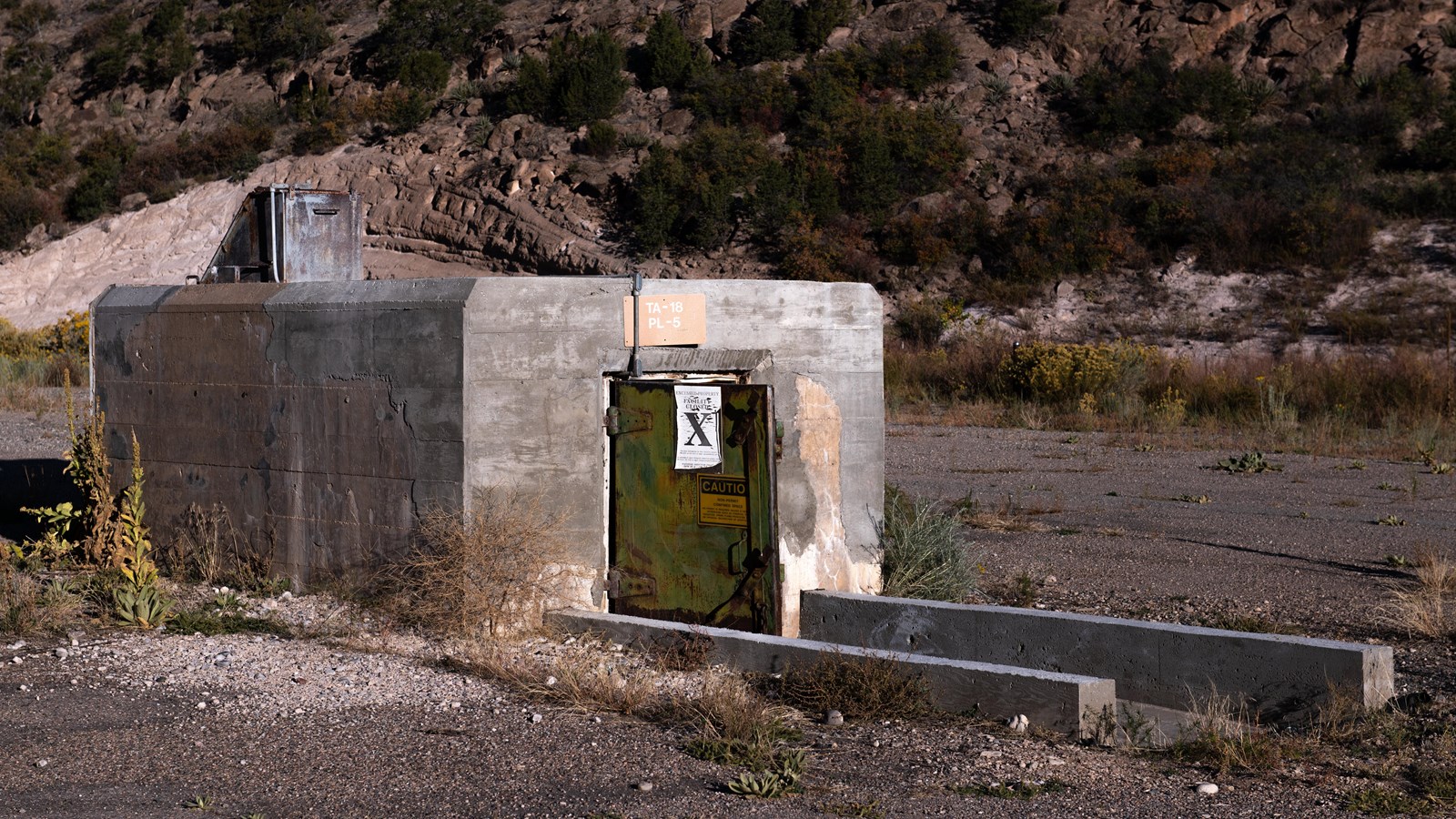Last updated: April 12, 2022
Place
Battleship Bunker - Creutz Test

LOS ALAMOS NATIONAL LABORATORY
This site is on Los Alamos National Laboratory property. You can only access it through guided tours offered on specific dates. Find out more about tour reservations and schedules on the Bradbury Museum website.
In preparation for the first test of an atomic device, Manhattan Project personnel gathered at the Trinity Site 200 miles (320 km) south of Los Alamos. While they made ready for the test, discouraging news arrived from Pajarito Canyon. Explosive lens tests indicated the test device, known as the Gadget, would fail.
Test leader Edward Creutz joined the Manhattan Project in 1942 as a physicist at the University of Chicago Metallurgical Lab. Working under Eugene Wigner, Creutz helped design water-cooled production reactors, which became the basis for the nuclear reactors at the Hanford Site. In 1944, Creutz moved to Los Alamos to develop explosive lenses for Fat Man, the first implosion-type weapon.
This work led him to supervise the Creutz test, the only experiment of the full-scale high-explosives assembly designed to assess how explosive lenses performed without a fissionable core. Creutz’s team experimented in the Pajarito Canyon, near this bunker. Initial test results led scientists to conclude that the Gadget would not work. When word reached Trinity, existing apprehensions turned into gloom at the test’s certain failure. However, physicist Hans Bethe analyzed the data overnight and immediately reported to Manhattan Project scientific director Dr. J. Robert Oppenheimer that the results had been misinterpreted.
Two days later the Trinity Test proved the success of the implosion design by detonating the world’s first atomic device.
Continue Your Journey
On the US Department of Energy tour to Technical Area 18, you go inside the Slotin Building, which bears the name of physicist Louis Slotin who was fatally exposed to radiation in that building. Additionally, you may peer into the Pond Cabin windows, where Emilio Segre conducted his plutonium research. You may also see Cavates, dwellings carved into tuff cliffs by Ancestral Pueblo people.
Can’t get on a Department of Energy tour? Learn more about the history of the Manhattan Project by visiting the Bradbury Science Museum! The museum’s interactive exhibits share stories from the project and provide a glimpse of other “behind the fence” historical sites.
